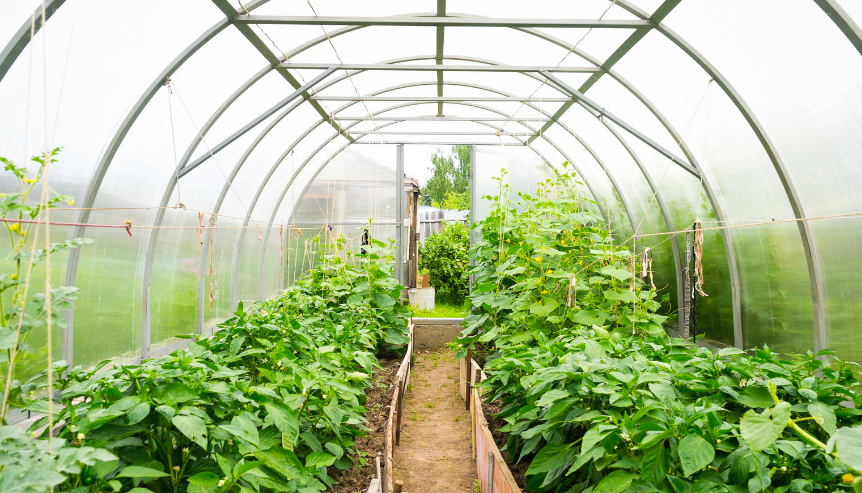Preparing a greenhouse for spring planting is an exciting task for any gardener. It offers a promising start to the season. Just as you might strategize your planting for the best results, players at Bizzo Casino strategize their game choices. Both gardening and online gaming require attention to detail and careful preparation to enhance the experience. A well-prepared greenhouse can provide a nurturing environment for plants to thrive. It protects them from late frosts and gives them a head start. Here’s a comprehensive guide on how to get your greenhouse ready for a successful planting season.
-
Clean and Organize
Before you introduce any new plants, a thorough cleaning is crucial. Winter can leave your greenhouse dirty, potentially harboring diseases and pests. Start by removing any plant debris, old pots, and tools. Wash the interior surfaces with a solution of warm water and mild soap. Or use a disinfectant specific for garden use. Pay special attention to the windows and roofing to maximize light penetration. Clean glass significantly increases the amount of light available to your plants.
Additionally, consider treating the structure with a preventive fungicide or insecticide after cleaning and before introducing new plants. This can help eliminate any lingering pathogens or insect eggs that survived the initial cleaning. It will ensure a healthier environment for your plants.
-
Check for Repairs
Inspect the structure of your greenhouse for any damages. Look for cracks in the panels or glass, check the sealing, and ensure that the doors and vents operate smoothly. Repairing any structural issues before the season starts is vital to prevent heat loss, water leakage, and pest invasion.
Make sure to also inspect and clean the guttering systems and external water drains. Proper drainage is essential. Especially during the rainy spring months. It prevents water from pooling around the base of your greenhouse. Otherwise it could lead to structural issues and damp conditions inside.
-
Temperature and Ventilation Control
Spring weather can be unpredictable, with temperature fluctuations that could affect your plants. Installing a minimum-maximum thermometer will help you monitor the greenhouse temperature. Aim to maintain an environment that is consistently warm but not too hot as extreme temperatures can stress plants.

Incorporating automatic vent openers can be a game-changer in managing the internal climate of your greenhouse. These devices open and close vents based on the temperature. They ensure optimal ventilation without the need for constant manual adjustment.
-
Soil and Bed Preparation
If your greenhouse has soil beds, it’s time to prepare them for planting. Remove any weeds and loosen the soil to enhance its structure and drainage. Enrich the soil by mixing in fresh compost or a balanced mix of soil amendments based on soil test results. For those using containers or grow bags, replace the old growing medium with fresh potting mix to ensure nutrients are available to your young plants.
Consider testing the pH level of your soil or growing medium, as many plants have specific pH requirements. Adjusting the pH early on can help prevent nutrient deficiencies and ensure optimal plant growth.
-
Watering System Check
Check your irrigation system for leaks or clogs and clean out filters. Effective watering is crucial, so ensure your system covers all areas evenly without over-watering any spots. If you’re using a manual watering system, ensure your watering cans and hoses are in good shape and ready for use.
It’s also beneficial to calibrate your watering system to deliver the precise amount needed at different times of the day. Investing in a timer can automate this process, ensuring that plants receive the right amount of water even when you’re not around.
-
Pest Control
Preventative pest control is key in a greenhouse environment. Check for signs of pests and diseases and treat them early. Natural options such as introducing beneficial insects, like ladybugs, can help manage pest populations. Additionally, sticky traps and barriers can be effective non-chemical options for keeping pests at bay.
Implement regular inspections as part of your routine. Early morning is often the best time to spot signs of infestation or illness when pests are most active. This allows for timely interventions, which can be crucial in preventing a full-blown outbreak.
-
Selecting and Arranging Plants
When choosing plants for your greenhouse, consider their light, space, and temperature requirements. Start with cold-hardy plants early in the season, such as lettuces and brassicas, which can tolerate lower temperatures. Gradually introduce more sensitive plants as the temperatures stabilize.
Remember to rotate crops if you’re planting in soil beds within the greenhouse. Crop rotation helps prevent soil-borne diseases and manages nutrient depletion. It also disrupts the life cycles of pests, providing an additional layer of natural pest control.
-
Accessorize for Success
Consider accessories that can enhance the greenhouse environment. Shade cloths can protect plants from too much direct sunlight, while heating mats or heated propagators can provide the extra warmth needed for germination and early growth.

Humidity trays or automated humidifiers can also be beneficial, especially for tropical plants that thrive in moist environments. Monitoring and adjusting the humidity levels will help prevent issues like leaf tip burn, a common problem in drier conditions.
Conclusion
Preparing your greenhouse for spring is a crucial step in ensuring a fruitful gardening season. By following these steps, you can create a controlled, clean, and efficient environment that supports the healthy growth of a wide variety of plants. Whether you’re a seasoned gardener or a beginner, taking the time to set up your greenhouse properly will pave the way for a rewarding spring planting season.








